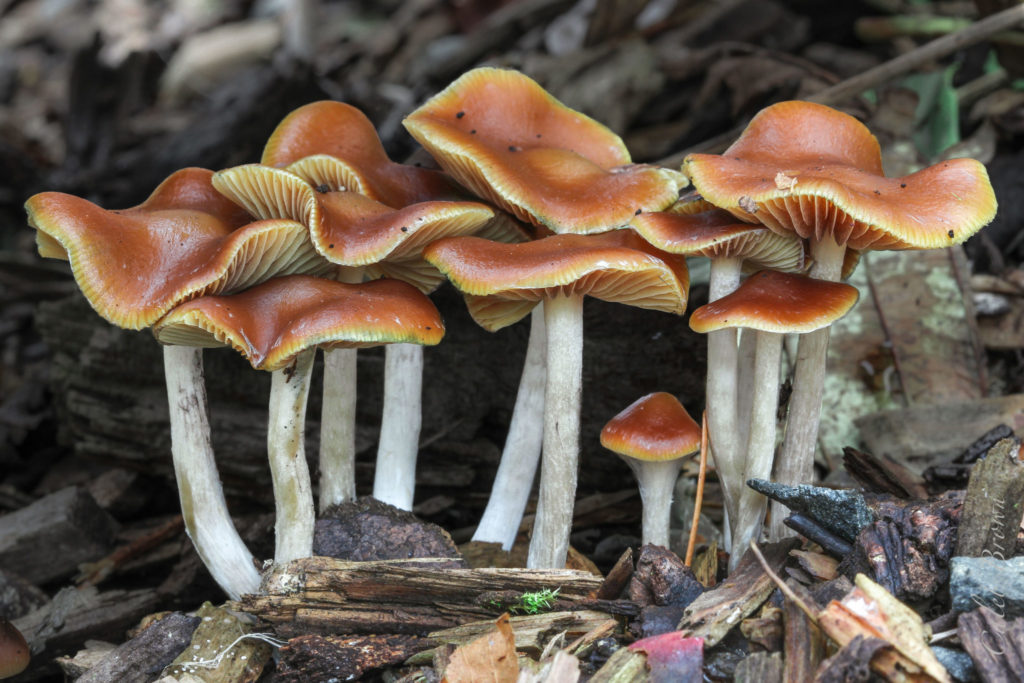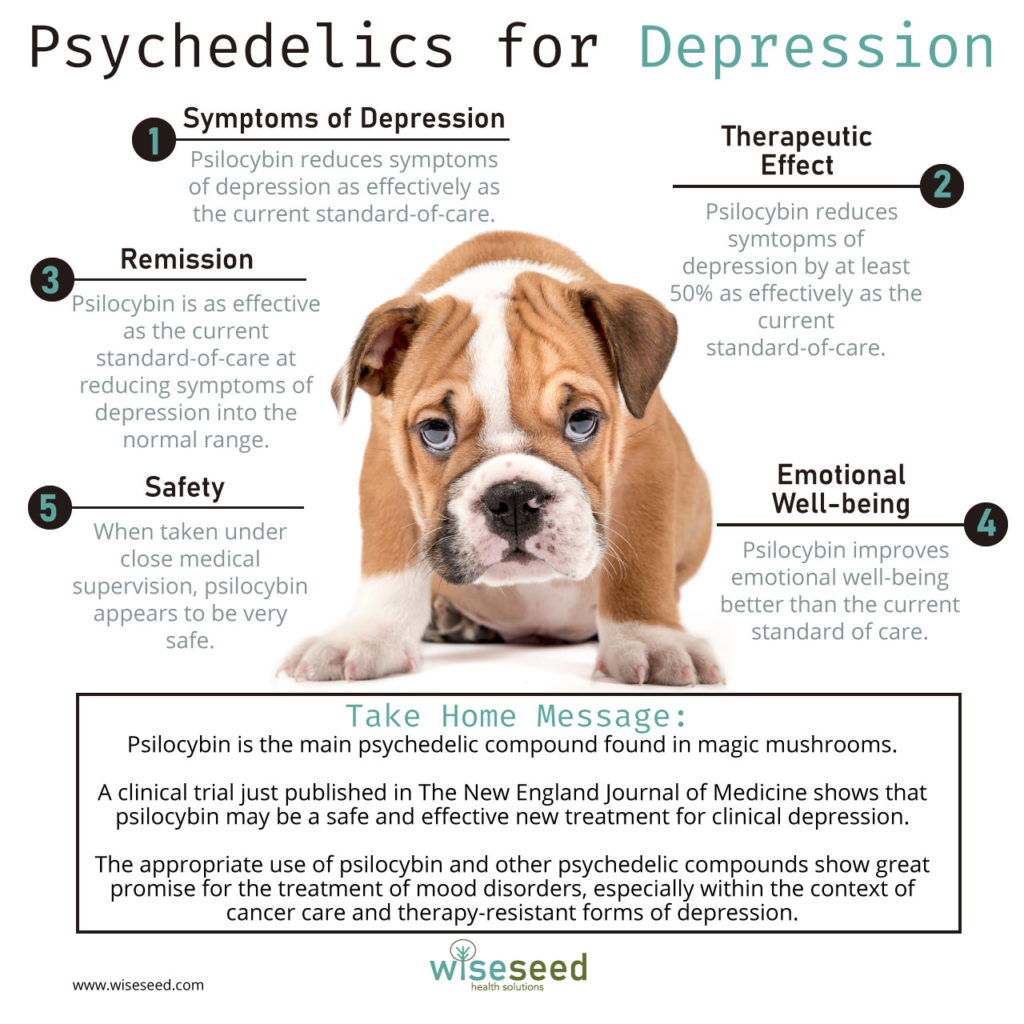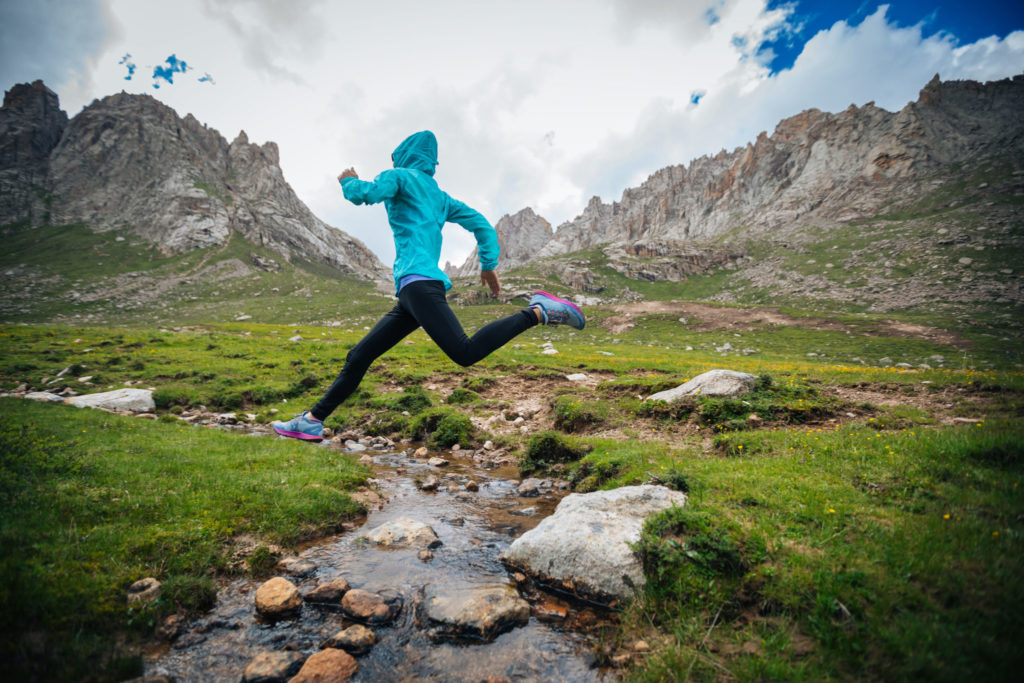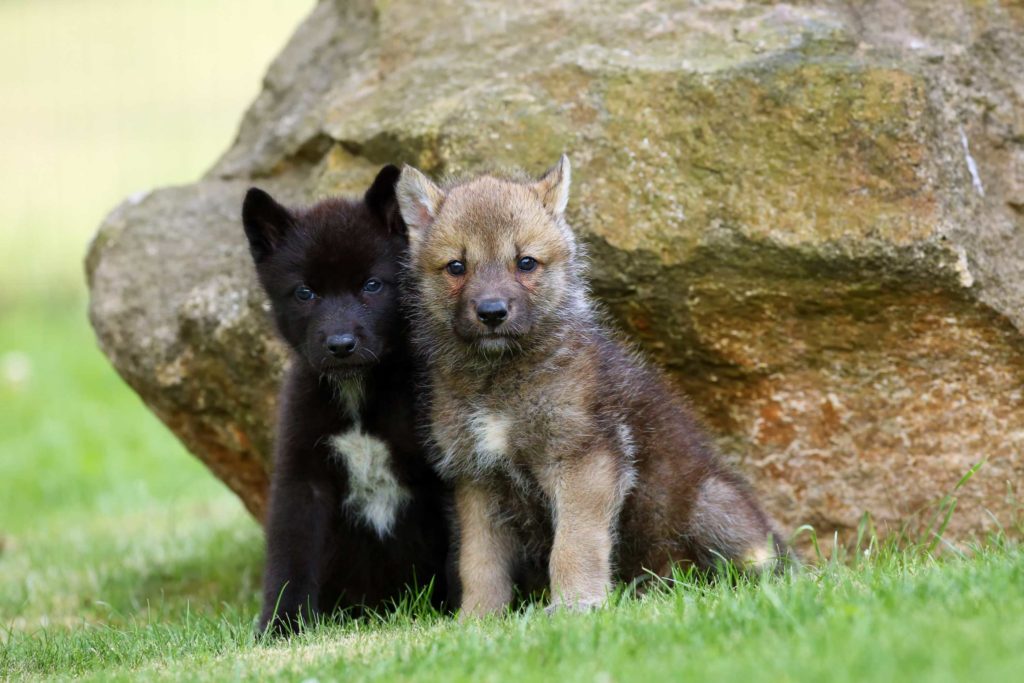Psychedelics for Depression

Psychedelics have been used in traditional medicine and ceremonies for centuries. The ceremonial use of mind-altering compounds is a fascinating and important subject. In case you haven’t heard, we are at the beginning of the second modern psychedelic revolution. In this vein, the focus of today’s article is the use of the psychoactive compound psilocybin for the treatment of clinical depression (1).
What is Psilocybin?
Psilocybin is a naturally occurring psychedelic prodrug found in many species of fungi. Once ingested, your body converts psilocybin into the psychedelic compound psilocin. Psilocin has similar mind-altering effects to LSD (a synthetic psychedelic compound), mescaline (the psychedelic present in peyote cacti) and DMT (the primary psychedelic ingredient within Ayahuasca).
What the Researchers Did
There are good reasons to believe that psilocybin may improve depression. First, the biological target of psilocybin, the serotonin 2A receptor, is known to play a role in depression (2). Second, 1-2 doses of psilocybin successfully reduced depressive symptoms in several small clinical trials (3, 4).
To strengthen these preliminary studies, researchers from the Imperial College London, conducted a clinical trial that measured the efficacy of psilocybin for treating depression (1). The trial compared two groups of depressed participants over a period of six weeks.
Group 1: The Psilocybin Group
This group received the full 25 mg dose of psilocybin at day 1 and day 21. For context, only 4-10 mg of psilocybin is required to induce psychedelic effect. Thus, the psilocybin group received more than twice the dose required for inducing psychedelic effects. These folks were tripping! In addition, the psilocybin group received placebo capsules, which they consumed daily (1).
Group 2: The Escitalopram Group
Escitalopram represents the primary drug class currently used to treat depression and anxiety. The escitalopram group received tablets containing 10 mg of escitalopram, which they consumed daily. However, they also received 1 mg of psilocybin at day 1 and day 21. Because 1 mg of psilocybin is well below the minimum dose required to induce psychedelic effects, the escitalopram group did NOT experience a psychedelic trip (1).
What the Researchers Found
1. Psilocybin treatment reduces depression as effectively as escitalopram.
Both psilocybin and escitalopram reduced depression. By every measure, psilocybin had a greater effect on reducing depression than escitalopram, however this difference did not reach statistical significance (1).
2. Psilocybin therapy reduces symptoms of depression (by 50% or more) as effectively as escitalopram.
A therapeutic effect is defined as people who experience a 50% or greater reduction in depression. 70% of participants in the psilocybin group experienced a therapeutic effect, compared to 48% in the escitalopram group (1). Although this trend again psilocybin, the difference did not reach statistical significance.
3. Psilocybin therapy may cure depression in some patients.
The third metric assessed were the number of patients who went into remission. Here, remission is defined as patients who scored within the normal range of depression symptoms the end of the six-week trial. Within the psilocybin treated group, 57% of participants were in remission by the end of the trial. Within the escitalopram group, 28% of the participants scored within the normal range at the end of the trial (1). This trend again favors psilocybin, however the difference between the two groups did not reach statistical significance.
4. Psilocybin treatment offers superior improvements in emotional well-being in comparison to escitalopram.
Although both psilocybin and escitalopram improved emotional well-being of subjects, psilocybin produced a larger improvement in emotional well-being (1). Moreover, patients in the psilocybin group reported ‘greater perceived improvements in the ability to cry and feel compassion, intense emotion, and pleasure and reported feeling less drowsy than those in the escitalopram group.’ (1).
Thus, psilocybin appears to be superior to escitalopram at improving emotional well-being in clinically depressed patients.
5. Psilocybin has fewer side effects than escitalopram.
Importantly, no serious adverse events occurred in either of the groups during the trial (1). In addition, the percentage of adverse events reported was similar for the two groups. Within the psilocybin group, most adverse events occurred within 24 hours after dosing, and the most common side effect was headaches (1). Fewer people in the psilocybin group experienced increased anxiety and dry mouth compared to the the escitalopram group. Tellingly, no patients within the psilocybin group cancelled their second dose (1).
Thus, psilocybin showed fewer side-effects than escitalopram, and was well-tolerated by patients.
Overall Conclusion
The evidence suggests that psilocybin is at least as effective as escitalopram at reducing depression while displaying superior improvements in emotional well-being with fewer side effects (1). Further, psilocybin consistently outperformed escitalopram in reducing symptoms of depression, although the study did have not enough participants for this trend to reach statistical significance.
I’m feeling depressed. Should I self-medicate with magic mushrooms?
No, for the following reasons.
1. Many mushrooms are highly toxic. If you harvest and eat the wrong species, you could die.
2. Over 1000 people applied to participate in the trial, yet only 59 people were included. The researchers who ran the trial excluded around 90% of their applicant pool. This is because of the risk of adverse events was considered too high for most applicants. Right now we don’t understand long-term effects or who’s at risk from psilocybin therapy. So tread carefully.
3. The sweet spot for a positive psychedelic experience is around 20 mg of psilocybin. More than this increases the probability of a bad trip, which is particularly risky for people suffering from mood disorders. Because it is impossible to control the psilocybin dose when consuming mushrooms, you run the risk of experiencing a bad trip with all the possible long-term consequences that entails.
4. The context of a psychedelic experience has a large effect on the outcome. Patients who receive psilocybin therapy within a clinical setting are guaranteed to receive the optimal psilocybin dose plus the best possible environment to support their psychedelic journey. Obviously, taking psilocybin in the wild has neither of those safeguards in place.
5. Although psilocybin is not addictive, regular users build up a natural tolerance. Thus, when self-medicating you run the risk of developing tolerance and losing the effectiveness of psilocybin over time.
6. Depression is a complex condition that requires an integrative therapeutic approach. If you self-medicate, you miss out on additional therapeutic interventions that may be more effective, longer lasting, and definitely less risky than dabbling with psilocybin or other psychedelics.
Take Home Message
The clinical trials to date support both the safety and effectiveness of psilocybin for the treatment of depression. Large scale Phase III trials will surely follow. It’s our hope that psilocybin will soon become widely available for the treatment for clinical depression and anxiety.
Please click on the link below for your free PDF.

References and Further Reading
1. R. Carhart-Harris et al., Trial of Psilocybin versus Escitalopram for Depression. N Engl J Med 384, 1402-1411 (2021).
2. D. Nutt, D. Erritzoe, R. Carhart-Harris, Psychedelic psychiatry’s brave new world. Cell 181, 24-28 (2020).
3. R. L. Carhart-Harris et al., Psilocybin with psychological support for treatment-resistant depression: an open-label feasibility study. The Lancet Psychiatry 3, 619-627 (2016).
4. R. R. Griffiths et al., Psilocybin produces substantial and sustained decreases in depression and anxiety in patients with life-threatening cancer: A randomized double-blind trial. Journal of psychopharmacology 30, 1181-1197 (2016).
Acknowledgements
Images provided by _Otto_ – The Shroomery, and badmanproduction
Disclaimer
The material displayed on this website is provided without any guarantees, conditions or warranties as to its accuracy.
Information written and expressed on this website is for education purposes and interest only. It is not intended to replace advice from your medical or healthcare professional.
You are encouraged to make your own health care choices based on your own research and in conjunction with your qualified practitioner.
The information provided on this website is not intended to provide a diagnosis, treatment or cure for any diseases. You should seek medical attention before undertaking any diet, exercise, other health program or other procedure described on this website.
To the fullest extent permitted by law we hereby expressly exclude all warranties and other terms which might otherwise be implied by statute, common law or the law of equity and must not be liable for any damages whatsoever, including but without limitation to any direct, indirect, special, consequential, punitive or incidental damages, or damages for loss of use, profits, data or other intangibles, damage to goodwill or reputation, injury or death, or the cost of procurement of substitute goods and services, arising out of or related to the use, inability to use, performance or failures of this website or any linked sites and any materials or information posted on those sites, irrespective of whether such damages were foreseeable or arise in contract, tort, equity, restitution, by statute, at common law or otherwise.

Ten Minutes is All You Need
Research has shown that ten minutes of moderate-to-vigorous exercise performed each day is enough to significantly reduce your risk of early death.

The Minimal Dose of Exercise to Maintain Endurance
You can maintain your aerobic fitness despite the ebbs and flows of life by reducing your training frequency or by reducing your training volume. But never by reducing your training intensity.




